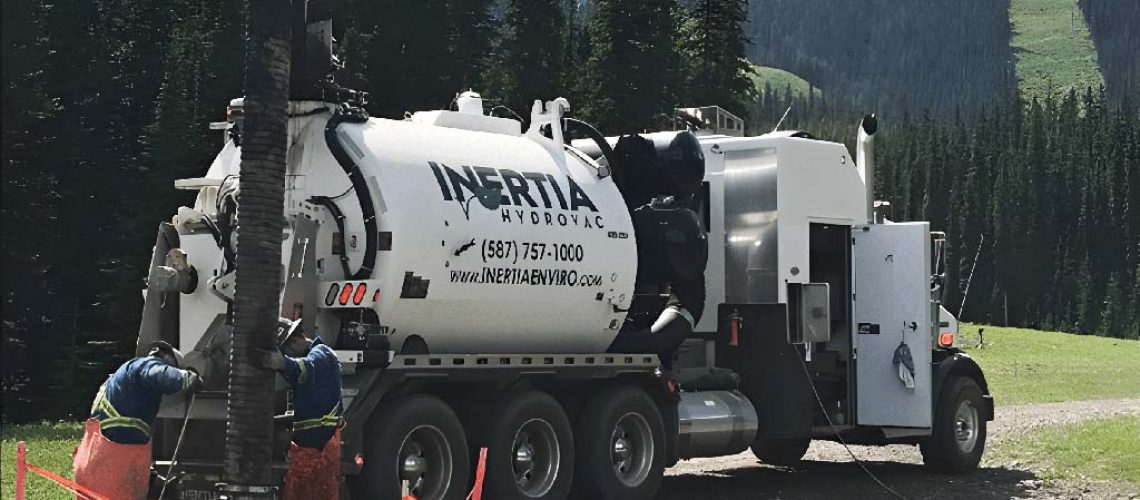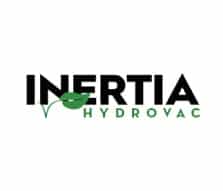
Hydrovac excavation has become one of the most trusted and widely used methods of digging across Western Canada. Whether you’re working in construction, utilities, oil and gas, or municipal maintenance, the shift toward non-destructive excavation is happening fast — and with good reason. Hydrovac combines speed, safety, and accuracy in a way that mechanical digging simply can’t match. For contractors working under tight timelines or near high-risk infrastructure, it’s quickly becoming the preferred standard.
The demand for hydrovac Edmonton services has surged in recent years, especially as cities grow upward and outward, placing more utilities underground than ever before. With dense networks of fibreoptic cables, gas lines, telecommunications, water infrastructure, and electrical conduits buried just inches beneath the surface, traditional digging carries risks that no project manager wants to face. Hydrovac removes that uncertainty by offering a cleaner, controlled, and far safer way to expose the ground without putting workers or infrastructure at risk.
What Is Hydrovac Excavation?
Hydrovac excavation is a non-destructive digging method that uses pressurized water to break up soil and a powerful vacuum system to remove the resulting slurry. Instead of cutting through the earth with teeth, claws, or mechanical force, a hydrovac relies on controlled water pressure to gently loosen soil. This technique significantly reduces the chances of damaging underground utilities and is especially valuable in areas with dense infrastructure.
While hydrovac has been around for decades, it has become increasingly popular as job site safety standards evolve. With the construction industry facing growing expectations around precision and environmental care, hydrovac offers an approach that’s both efficient and compliant with modern best practices. Operators can expose utilities with millimetre-level accuracy and maintain clean, tidy work zones, keeping projects moving without unnecessary disruption.
How Does the Hydrovac Process Work?
To understand why hydrovac is reshaping the excavation landscape, it helps to break down what actually happens during a dig. Although the overall method is straightforward, the technology behind it is sophisticated and designed for high performance in everything from urban back alleys to remote industrial leases.
Loosening Soil with High-Pressure Water
The process begins with a controlled stream of pressurized water aimed directly at the ground. The operator adjusts the pressure based on soil type — clay, sand, gravel, frozen earth, or a layered combination. The goal isn’t to blast the soil away but to dissolve and soften it in a managed, predictable pattern. This controlled approach keeps the surrounding ground intact while preserving any buried assets.
Water pressure is carefully calibrated so it cuts efficiently without disturbing sensitive infrastructure beneath. The ability to tailor water flow and temperature gives hydrovac operators unmatched precision, especially in challenging or variable conditions.
Vacuum Extraction Removes Soil and Slurry Efficiently
Once the soil is loosened, a high-powered vacuum hose lifts the slurry into a debris tank mounted on the hydrovac truck. This extraction step is what allows hydrovac crews to maintain spotless work areas. Instead of leaving piles of dirt scattered around the site, all material is removed immediately, leaving a clear, controlled excavation zone.
The debris tank stores the material until it can be offloaded at an approved disposal site. This closed-loop approach minimizes environmental impact and keeps job sites far more organized than traditional excavation.
Non-Destructive Digging Near Buried Utilities
Every year, underground utility strikes cost Canadian contractors millions in repairs, downtime, and liability. With hydrovac, the risk of striking electrical lines, fiber optic cables, gas mains, or water infrastructure is dramatically reduced. Because water removes soil without blindly tearing into the ground, operators can uncover utilities gently and with full visibility.
This is why hydrovac is the preferred method for daylighting — the process of safely exposing buried assets before work proceeds.
Year-Round Use — Even in Frozen Ground
Canada’s winters don’t pause construction, so excavation methods need to work in frozen conditions. Hydrovac trucks are equipped with onboard heaters that warm the water, allowing operators to cut through frost that mechanical equipment struggles with. This capability extends the working season and prevents the delays often associated with winter digging.
Whether the ground is solidly frozen or simply packed with dense clay, hydrovac remains effective without resorting to aggressive mechanical force.
Key Benefits of Hydrovac vs. Traditional Digging
Hydrovac is gaining popularity not just because it’s safer but because it reshapes the entire workflow of excavation projects. Compared to mechanical digging, the advantages are clear and impactful.
Enhanced Safety When Working Near Infrastructure
Safety is the biggest reason hydrovac is becoming the new standard. Preventing utility strikes protects workers, reduces liability, and maintains uninterrupted service for businesses and residents. Hydrovac removes the guesswork by providing operators with complete visibility of the excavation as it progresses.
Faster and Cleaner in Tight-Space Urban Projects
Urban environments don’t offer much space to maneuver. Narrow laneways, congested streets, and delicate surroundings make traditional equipment awkward and sometimes impractical. Hydrovac trucks can operate in extremely tight spaces and remove soil with minimal mess, keeping walkways, roads, and adjacent areas clear.
Smaller Crews, Fewer Delays, Less Rework
Traditional digging often requires multiple labourers, spotters, and cleanup crews. Hydrovac, by contrast, relies on a highly trained operator and a streamlined workflow. The accuracy of hydrovac also means fewer mistakes — and fewer mistakes mean less rework, fewer shutdowns, and shorter schedules.
Eco-Friendly and Precise Soil Removal
Mechanical excavation disturbs large amounts of soil and can damage roots, surrounding vegetation, and soil stability. Hydrovac’s controlled cutting reduces disruption and limits the environmental footprint. Material is captured immediately, preventing erosion and preserving the natural surroundings.
Why Utility Companies and Municipalities Are Adopting Hydrovac
Across Canada, municipalities, utility companies, and private developers are embracing hydrovac as a preferred method for excavation. As buried infrastructure becomes denser and more complex, the industry needs solutions that prioritize accuracy, safety, and cost efficiency — and hydrovac checks all the boxes.
Where Hydrovac Is Used and Why It’s Growing
Hydrovac excavation is used in nearly every sector: construction, pipeline installation, fiber optic expansion, utility locating, potholing, valve box cleaning, and more. As cities expand, demand for non-destructive digging increases. The method is particularly valuable for large infrastructure projects where damaging existing utilities would cause major delays or safety concerns.
Hydrovac is also becoming a staple in environmental remediation, industrial plant maintenance, sign and pole installation, and trenching for new services. Its versatility, cleanliness, and predictable results make it a go-to choice for engineers and contractors who want reliable outcomes.
As hydrovac technology becomes more widely adopted, the reasons behind its growth become increasingly clear. Contractors want predictable results. Municipalities need safe digging near high-value infrastructure. Developers want excavation that won’t trigger delays. And across all sectors, there’s a shared desire to minimize environmental disruption. Hydrovac fits neatly into every one of those priorities, which is why its popularity continues to climb year after year.
Is Hydrovac the Right Choice for Your Next Project?
Most project managers already know the risks that come with traditional digging. Hitting a water main doesn’t just cost money — it shuts down streets and businesses. Striking a gas line is far worse. Even damaging a fibreoptic cable can halt operations for dozens of organizations at once. Hydrovac removes much of that uncertainty. It’s a tool designed for accuracy, and accuracy is the insurance policy every modern project needs.
Operators can dig in congested corridors, weave around existing infrastructure, and expose delicate assets without the aggressive force of a bucket or trencher. This makes hydrovac ideal for projects in dense urban settings, industrial plants full of buried conduits, or neighbourhoods where utility lines run close to the surface. It’s equally effective in rural areas where ground conditions can vary dramatically from one job site to the next.
Beyond safety, hydrovac often shortens project timelines. Clean excavation means there’s no need for extensive labour to move spoil piles, rebuild disturbed areas, or redo work caused by accidental damage. The crew that follows (whether electricians, plumbers, installers, or civil contractors) gets a neat, precise opening to work with, helping them complete their portion faster and with fewer headaches.
Hydrovac is also an excellent option when you’re working under tight access restrictions. In many cases, trucks can position themselves at a distance and reach the excavation site through the boom or extension hoses. This resolves challenges in alleys, backyards, roadside shoulders, and industrial sites with limited clearances.
For winter projects, hydrovac stands out even more. Frozen ground can delay mechanical digging for days, but heated hydrovac systems allow work to continue without waiting for thaw cycles. That reliability keeps schedules intact — which is especially valuable for utilities, emergency repairs, and time-sensitive construction.
If your project requires precision, safety, control, or uninterrupted workflow, hydrovac is almost always the more strategic choice. It’s not simply “another method of excavation.” It’s a smarter way to dig.
Dig Safer, Smarter, and Cleaner
Excavation used to rely on heavy steel and sheer force. Today, the industry is shifting toward technology that protects both people and infrastructure. Hydrovac is a leading part of that shift. It offers a balance of accuracy and efficiency that mechanical digging can’t match, especially in environments with dense utilities or other constraints.
The process is straightforward but powerful: use pressurized water to loosen soil, vacuum it away cleanly, and expose what lies beneath without guesswork. The result is a safer job site, fewer interruptions, and excavation that aligns with the high standards of modern construction and municipal planning.
As Canadian cities expand and infrastructure networks grow more complex, the need for non-destructive excavation will only increase. Hydrovac isn’t just a trend — it’s the future. And for contractors, municipalities, and project managers who want to protect timelines, budgets, and underground assets, it’s a future worth embracing.
Whether you’re planning a major infrastructure build or a quick utility locate, choosing hydrovac means choosing a smarter path forward. It’s an excavation designed for the challenges of today — and the expectations of tomorrow.


